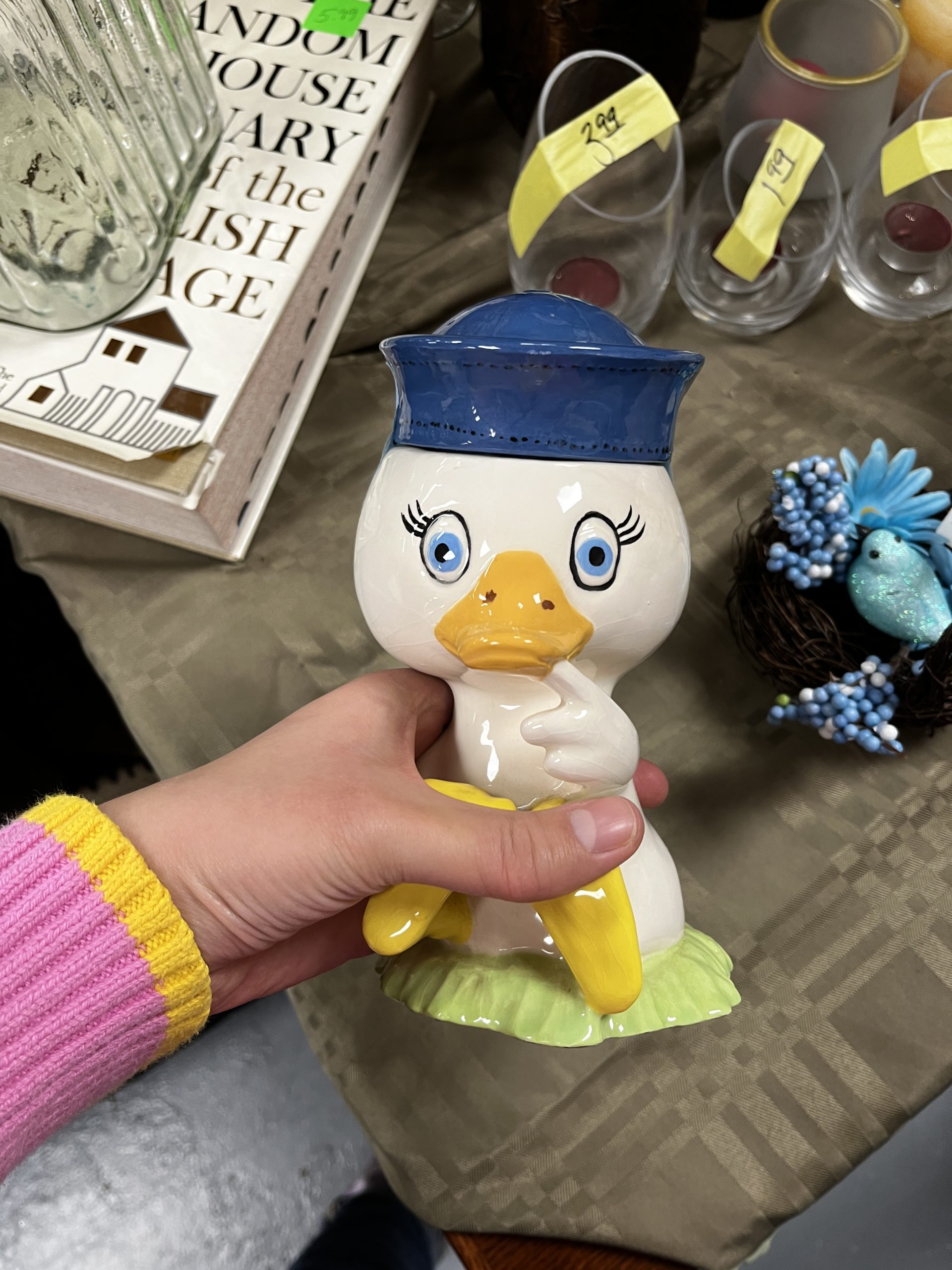My overarching ~thrifty~ goals for this New Year are to shop secondhand whenever possible and to cut down spending on things that don’t serve my lifestyle. As a self-employed writer, my income can really go through feast and famine cycles, so I like to be frugal even when I have ample savings. Shopping secondhand is a great solution for staying within my budget, but I’d still like to be mindful of overconsumption when I do thrift. While it’s not realistic for me to go through with a no-buy year, it’s definitely possible for me to be mindful of what I bring into my home and how I organize my space.
For a more thoughtful year of secondhand shopping, here are my thrifting resolutions for 2024!
Prioritize buying home decor and furniture items secondhand (except for upholstered pieces)
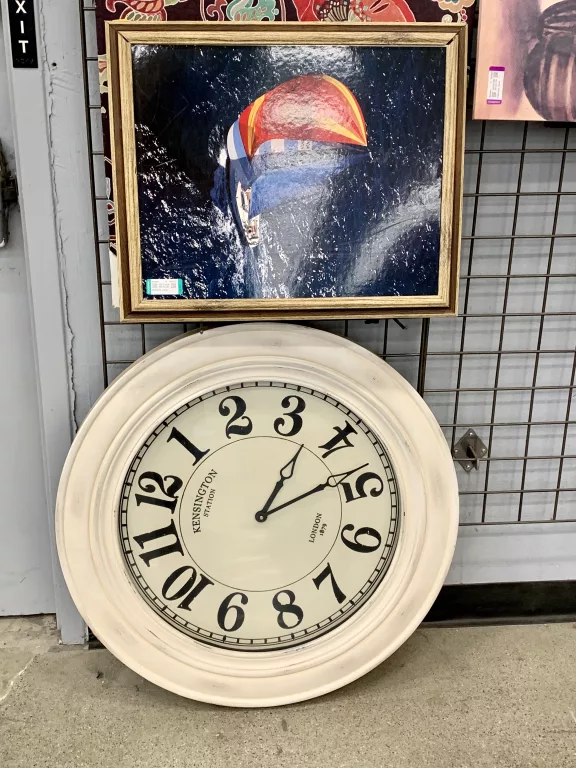
When it comes to home decor, you can often unique and high-quality pieces secondhand, whether you’re stopping by your local thrift store or sifting through Facebook Marketplace. I am trying to put my TJ Maxx/Homegoods impulse buy days behind me (except for dog toys and supplies).
Avoid thrifting clothes just because they feature a designer brand
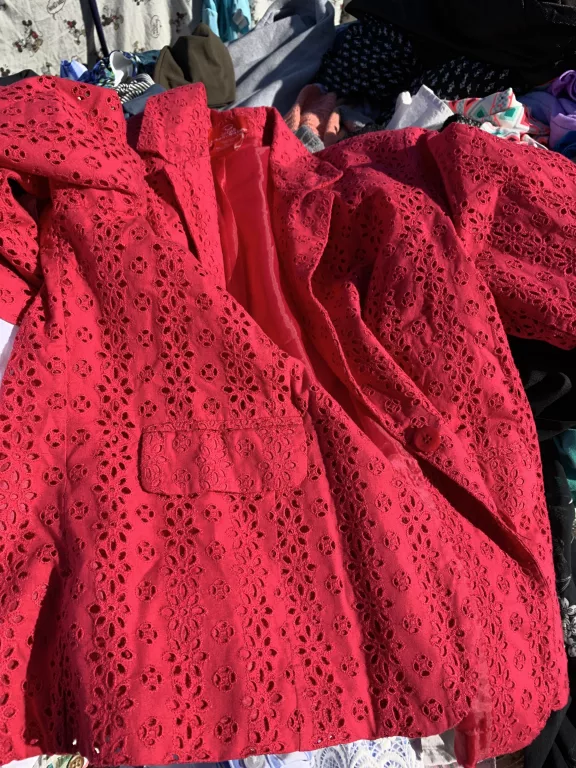
It’s so tempting to buy designer brands (Oscar de la Renta, Calvin Klein, Kate Spade, etc.) secondhand when you spot them at the thrift shop or flea market! It’s kind of spurious to conflate a designer name with good taste or high quality but I have to admit that I’m not above doing it. Still, I’m not a reseller, so there’s absolutely no reason for me to buy designer brands just because they happen to be inexpensive at the thrift store. I’d rather buy pieces that genuinely speak to me so that I don’t accumulate clothes that end up collecting dust.
Buy all clothes secondhand (except underwear, socks, and athleisure)
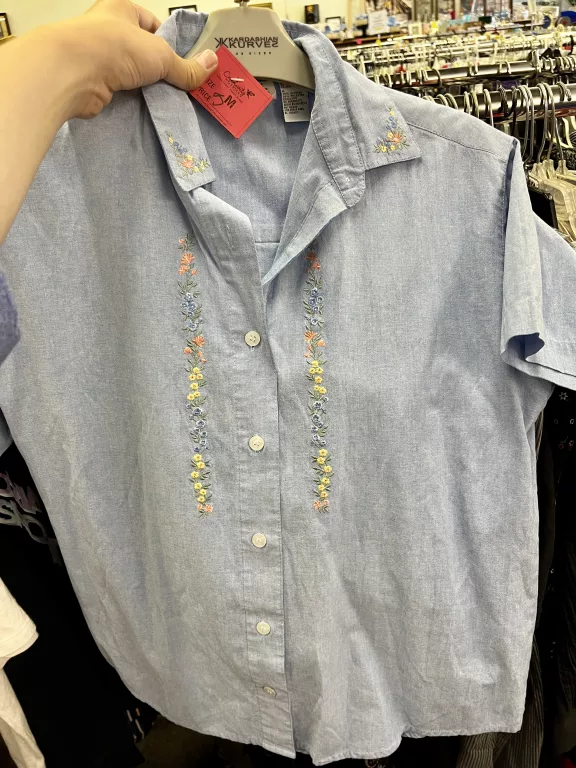
Roughly 90% of the clothes I bought this year were thrifted, and I’d like to keep it that way. Coupled with the fact that I’m a 29-year-old elder, I live in a very casually dressed part of northern California and work from home, so I don’t need to buy trendy new pieces. I also find that vintage pieces often have better quality than current fast fashion or mid-range items.
Thrift only clothing pieces that I absolutely love (and don’t already have)
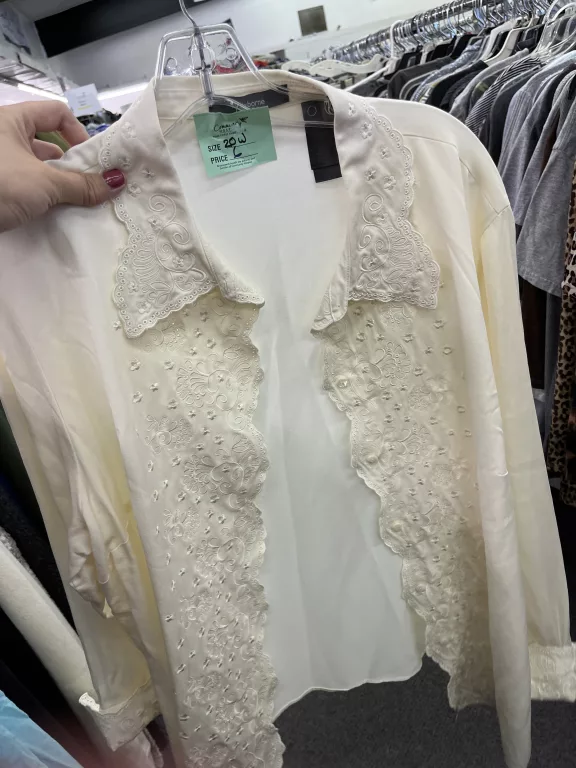
I know that people often buy multiples of the pieces and styles that they love, but I want to take the opposite approach when it comes to curating my closet. I like having unique pieces that allow me to mix up my style — I don’t need another black long-sleeve tee or pair of straight-leg jeans. Also…I’d just like to own less clothing in general.
Pick up the latest reads from the library instead of buying them
I seldom buy new books, but I feel like this is worth keeping in mind since I *did* pick up a few Booktok books from Target and Costco this year. I don’t usually keep up with the latest reads — when I do, I find that the library often has what I’m looking for (or gives me the chance to request it), even if the wait might be a bit long. Plus, if I come across a library book that I love, I can always wait a few months or years to get it secondhand for a cheaper price.
Buy only used books (or books from used bookstores and library sales)
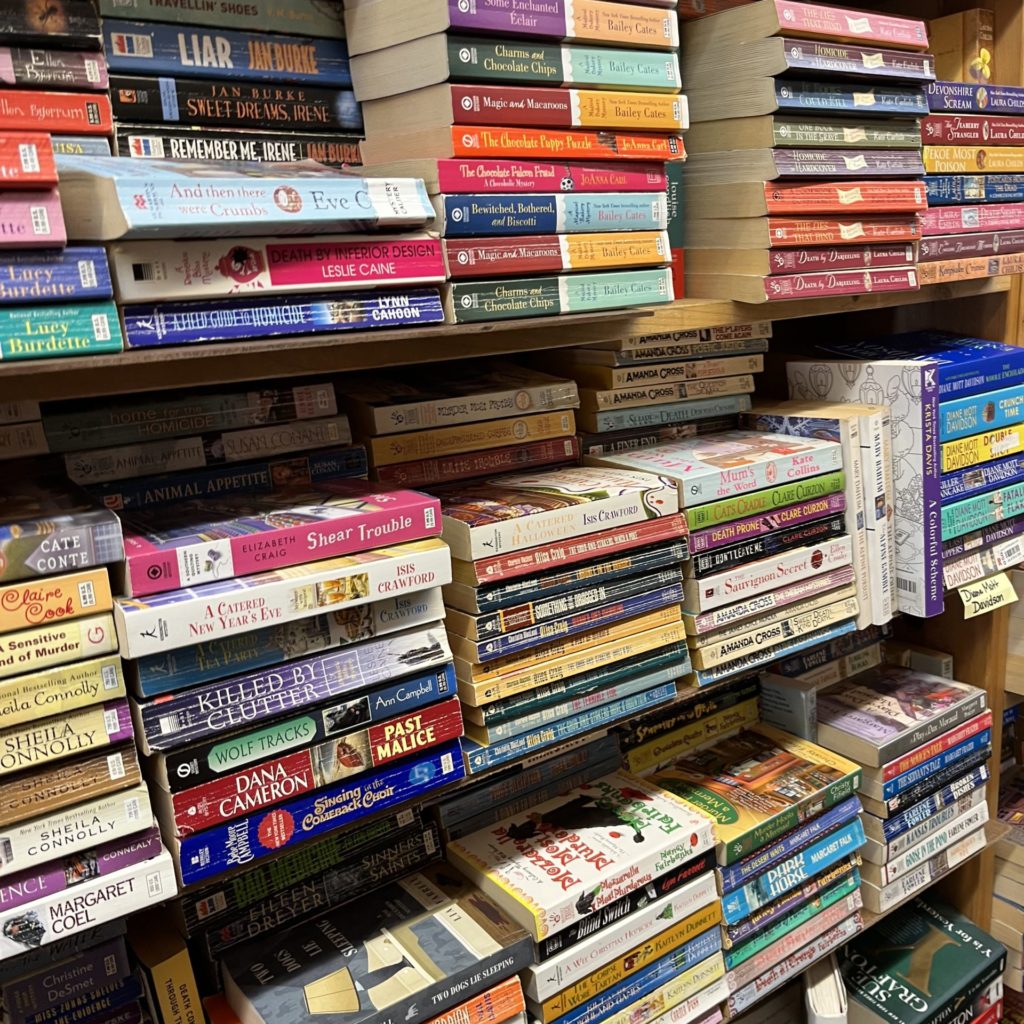
Most of my books are secondhand copies from eBay, Goodwill, or Thriftbooks, but I think it’s helpful to set a rule for only buying used books or books from my local used bookshop. I’d like to support my local book scene and keep myself from breaking the bank!
Buy gifts secondhand for holidays and birthdays (whenever appropriate)
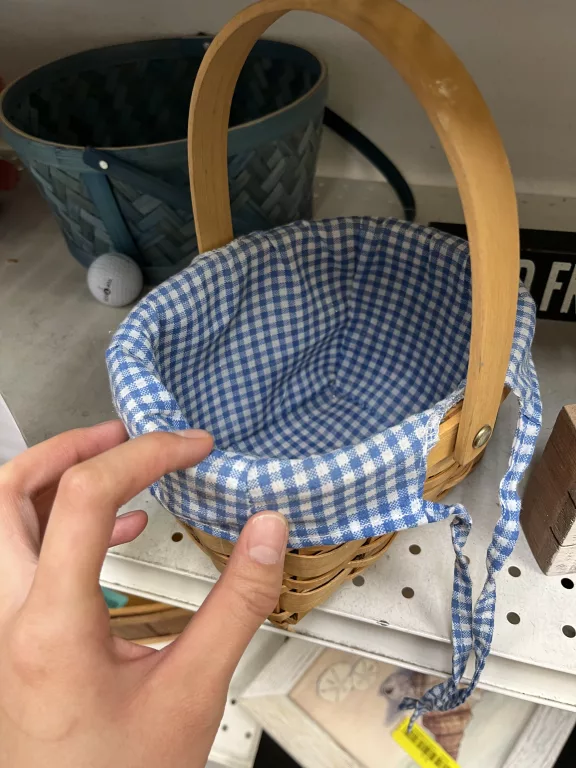
Thrifting for Christmas gifts this year was quite the creative challenge, but I think I managed to find wonderful pieces for my loved ones after dedicating some time to shopping. I’d rather find high-quality secondhand pieces than buy new but poorly made pieces. (This is a lesson learned from years of buying pricey, middling-quality gifts from Nordstrom Rack.)
One of my favorite thrifting influencers, Dina’s Days, keeps a gift basket year-round to toss in gifts so that she always has presents on hand!
Routinely donate items to local thrift shops
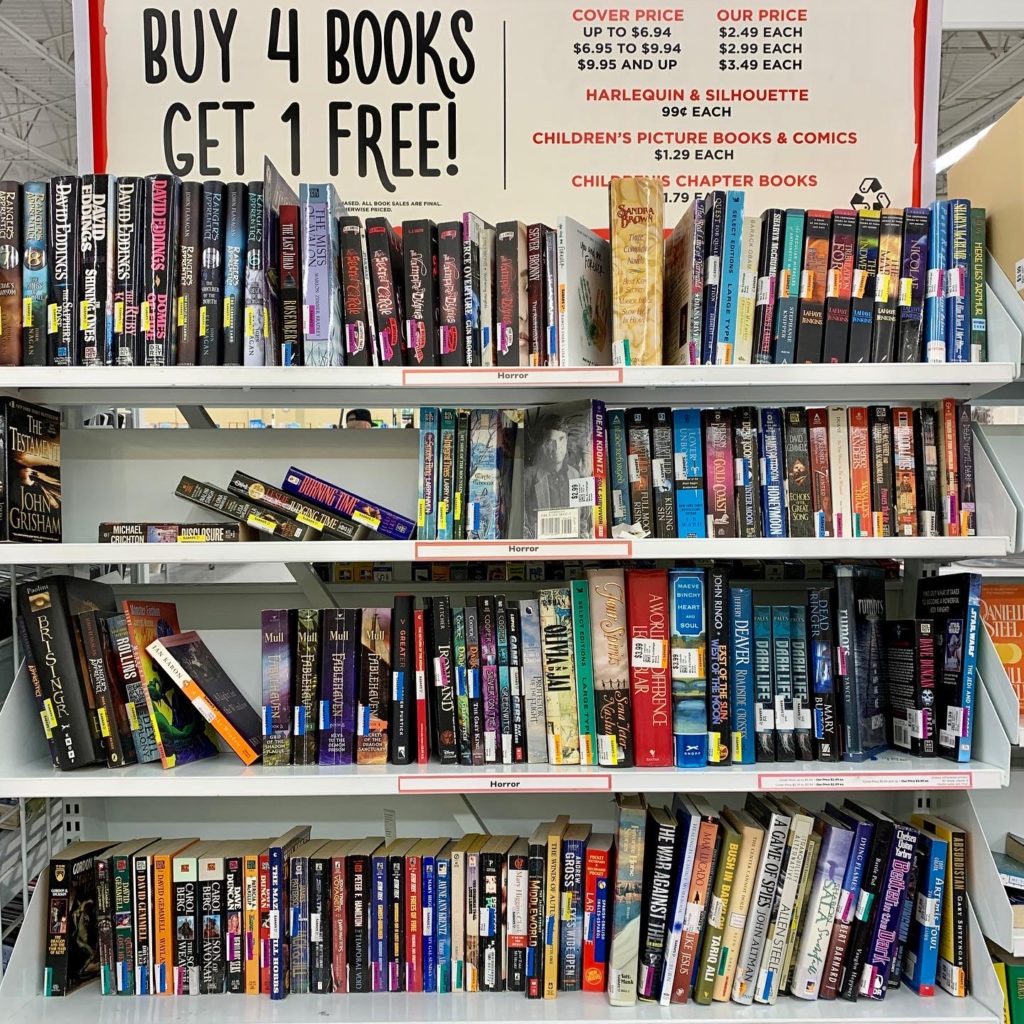
Minimalism is not my vibe, but I do fancy a good declutter every once in a while. I’d like to make a habit of donating to my local charity shops every month or quarter. It’s a win-win — I’m paying it forward to my favorite shops and clearing up space for more thrifted goods. Routinely checking in with myself about what I can let go of also gives me an idea of what’s an impulse buy and what’s an actual investment.
Focus on ways to display thrifted pieces
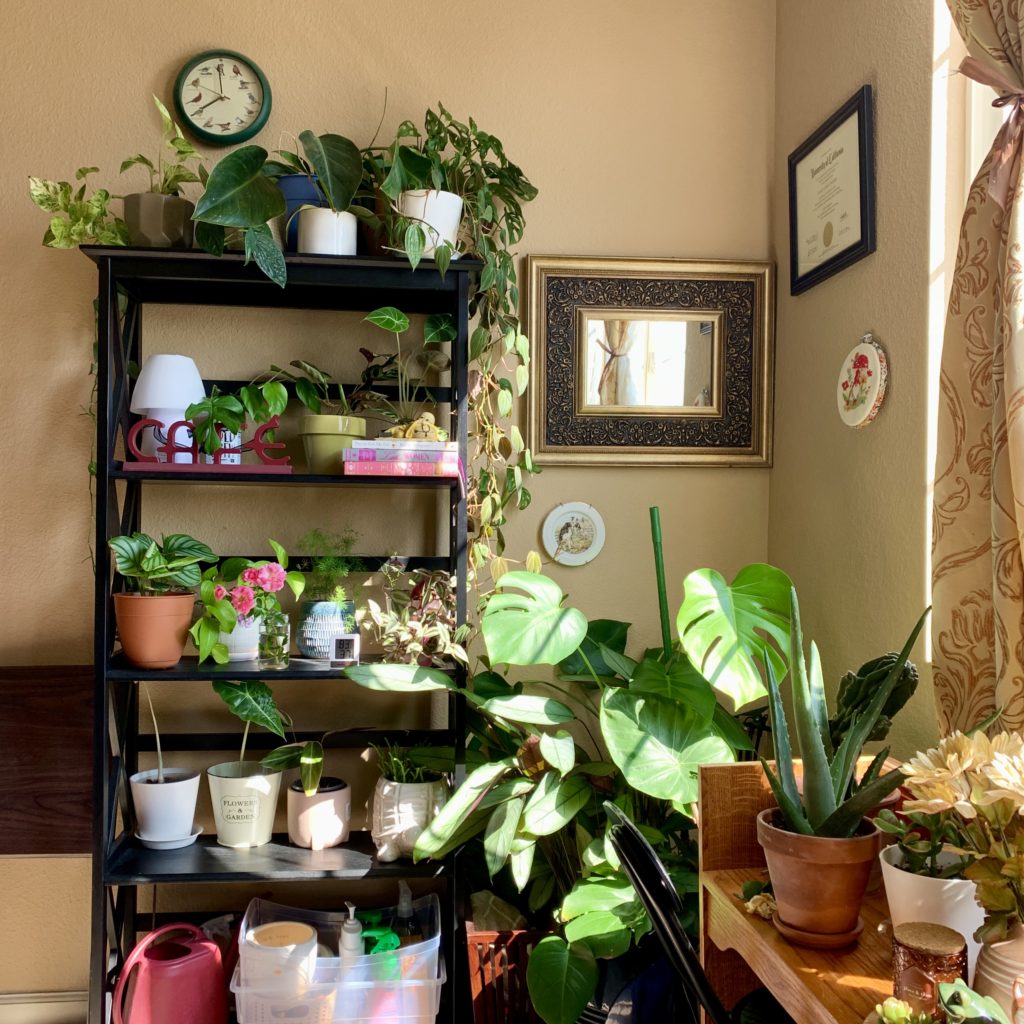
I have accumulated so many books and tchotchkes from the thrift store that I think it’s high time I figure out how to display them. Right now, they live in various nooks and crannies of my bedroom. I’d love to invest in a few display cases. No need for a $1,000+ china cabinet (reiterating the self-employed writer budget thing), but a shelf with fancy edge trimming would be nice!
Go through thrift stores to find craft supplies and creatively refurbish thrift finds
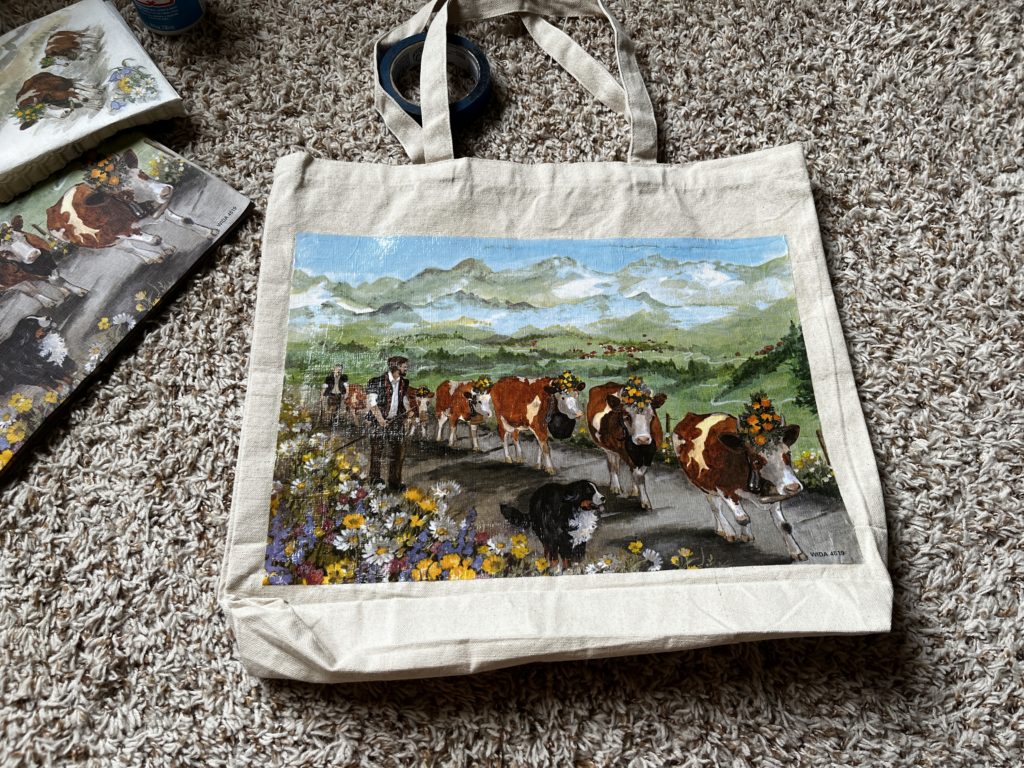
As a JoAnn Fabrics stan, I love a little mental health stroll around my local craft store. That said, I usually find so many amazing craft supplies around the thrift shop — there are always mountains of yarn skeins, notebooks, craft paper, canvas bags, fabric rolls, ribbons, unfinished wood pieces, and sewing kits! This year, I’d like to do check-ins with my local thrift shops before buying new supplies. You never know what you can upcycle either — that so-so silk blouse could add some gorgeous texture to a DIY lampshade.
In addition to finding craft supplies at the thrift store, I’d also like to be more creative with my thrift finds and be more open to rehabilitating imperfect pieces. Often, I overlook items that might be chipped or dented, but it’s usually a quick fix with a little bit of creativity. Most things can be fixed with glue or acrylic paint!
Quite honestly, these points are more like mental frameworks than rigid SMART goals, but I’d like to think that considering my relationship with thrifting and overconsumption is the first step to changing my secondhand shopping habits!
